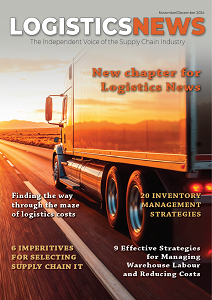How supply chain analytics can help companies build more efficient operations and save time and money.
Jay Bear was quoted saying: “We are surrounded by data but starved for insights.” Although data is not a novel concept, it is recognised as a critical component of digital transformation. Data holds the key to achieving incredible breakthroughs in supply chain management if wielded by a knowledgeable expert.
Supply chain management is widely recognised as a critical piece of the puzzle for business success because it directly affects the ability to provide a positive customer experience while accounting for many expenses that affect overall profitability.
Businesses are looking for ways to make processes faster, cheaper and easier along the lengthy path from raw materials suppliers to end users. This is especially important because supply chains have become increasingly complex over time – companies are working with expanding international partners and facing the intensifying pressure to deliver their products as quickly as possible.
A supply chain has a domino effect: each step in the network affects the one after it, and any issues at any stage can have an impact on the ability to meet customer expectations. Supply chains involve a wide range of activities, people and businesses, resulting in massive data generation. This is where supply chain analytics enters the picture.
Analysing the data
Supply chain analytics is the analysis of data drawn from various supply chain applications, such as supply chain execution systems for procurement, inventory management, order management, warehouse management and fulfilment, and transportation management (including shipping). Furthermore, supply chain analytics can transform vast amounts of data into easily digestible dashboards, reports and visualisations that influence crucial decisions and lead to better outcomes.
This provides employees with a comprehensive view of the logistics network and allows them to comprehend the upstream and downstream consequences of a specific disruption, therefore enabling a quick response to minimise the potential impact. Easy access to comprehensive data analytics has become critical in an increasingly competitive landscape.
Demand planning (using historical data and other factors to predict what customers will order), sales and operations planning (manufacturing and/or purchasing the goods required by a business to meet forecasted demand) and inventory management (tracking sellthrough of items and which SKUs it needs to replenish) are a few examples of supply chain analytics.
Each of these activities can improve the overall efficiency of business operations, resulting in significant cost savings. For example, more accurate demand planning means avoiding procurement overspending while also avoiding stockouts and excess inventory (which can turn into obsolete inventory).
There are four primary types of supply chain analytics that companies should consider right now to build more efficient operations and save time and money:
- Descriptive analytics:Companies can use descriptive analytics for the supply chain to collect and organise historical data to get a clear picture of past events. It tracks performance and patterns throughout the supply chain, from suppliers to logistics to retailers and points of sale. For example, a national retailer might use an analytics dashboard to track demand for specific SKUs across geographic locations over a period of time.
- Diagnostic analytics:This is used to identify the source of problems and possible solutions to avoid them in the future. Identifying what happened is usually only applicable if the business also knows why it happened. As a result, diagnostic analytics is also known as root cause analysis.
- Predictive analytics:This assists businesses in predicting what might happen in the future and determining the likelihood of various outcomes. It allows for better planning and goal setting, which results in risk avoidance. It also enables businesses tomore accurately predict future performance based on past performance and the factors currently influencing it. What-if analysis is a valuable type of predictive analytics that involves changing various values to see how those changes affect the outcome.
- Prescriptive analytics:This advises teams on what to do based on predictions. It is the most complex of these analytical techniques, which is why it is used by less than three percent of businesses. This type of analytics could notify a retailer that one of its key vendors is likely to have difficulty sourcing materials due to political unrest in the region where it currently obtains materials. The retailer could investigate alternative locations for the material and collaborate with the vendor to avoid the problem in the first place. Alternatively, the analytics may reveal that changing vendors or replacing the item with a different product is the safest option.
While the use of AI in prescriptive analytics is currently making headlines, the reality is that this technology is still in its infancy in terms of producing relevant, actionable insights. The use of AI at scale necessitates the execution of thousands of queries in search of statistical anomalies. However, randomly identified anomalies do not always directly point to business opportunities. For the time being, human involvement is critical to obtaining relevant insights.
Today’s supply chain analytics solutions already have impressive capabilities, and as technology advances, they will become even more of a game-changer, transforming business across all industries. As a result, a supply chain’s resilience and cost-effectiveness can make or break a business. Supply chain analytics can improve your business in both areas, which is why they’re becoming more critical for today’s industry leaders.
However, transformation, like eating a healthy diet, takes time and is a proactive journey. Harmonising data analytics can eventually lead businesses to intelligent supply chain solutions and the ability to compete with industry leaders. So, ask yourself, is your supply chain being fed for success or failure? •

.jpg)


